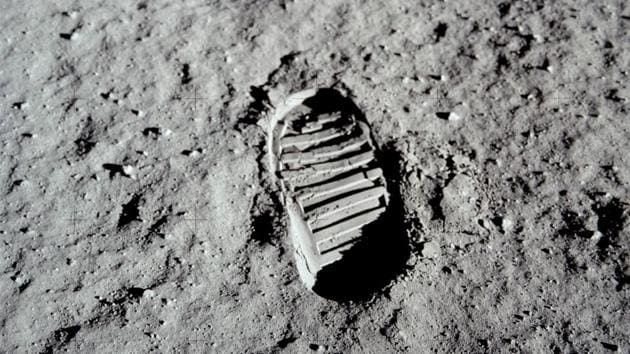How photography went beyond the call of duty on the Moon
Over the decades, Nasa released all images from its Apollo missions to the public for free, democratising the medium even further, as the images lay bare open to scrutiny and research
During Nasa’s Gemini IV space mission in 1965 that orbited earth, astronaut James McDivitt photographed his colleague Edward White, in what became the first-ever image of a spacewalk. In 1968, astronaut William Anders made an iconic photograph of the “earthrise” from the command module of Apollo 8, which ended up on the cover of most major magazines. The public success of that ethereal visual of the Earth from the lunar orbit is what possibly led to Nasa engaging 12 cameras on the moon over the next four years in its lunar missions.

But it all began in 1962, when amateur photographer, but ace astronaut, Walter Schirra who commanded Apollo 7, expressed his displeasure at the quality of 35mm photographs from the previous missions. Schirra reached out to professionals at LIFE and National Geographic for advice on a good camera, and they recommended the medium-format Hasselblad 500C. He bought it for $500 from a Houston photo supply store, and convinced Nasa to modify it for space use. Photography, up until then, was largely used in missions to record instrument readings and for basic visuals, but this changed the scope of the image as evidence of space exploration.

By the late 19th century, photography had broadly exhibited two patterns in its practice -- the study of nature, and the portraiture of human life. When it came to scientific use, it was, and is, still used to record evidence for further study.
In fact, the official Apollo 11 mission plan for photography stated that the equipment was designed to photograph “targets of opportunity” and “obtain photographs of the Lunar Module and surface activities after LM landing.”
Astronauts Neil Armstrong and Buzz Aldrin underwent years of training prior to the mission in geological sites in Arizona, Nevada and Hawaii, learning how to operate the Hasselblad EL cameras that they would eventually use on the moon. It was essential that the equipment be lightweight, so Hasselblad replaced its leatherette casing with thin aluminum plates painted matt black; the shutter button was placed beneath the lens for better access given the bulky spacesuits, and a special thin-base Kodak film was created for an improved film magazine, giving the camera 200 exposures instead of the usual 10. Apollo 11 was an immaculately planned expedition to gather scientific information using photography like never before.
To collect scientific data, Nasa had planned a series of activities to be carried out on the moon’s surface, including Aldrin photographing his own footprint to allow later study of the lunar surface bearing-strength. When the photograph was seen by the world, it became symbolic of the spirit of human exploration beyond human imagination. Armstrong’s photograph of Aldrin standing on the “Sea of Tranquility”, with the horizon behind him, became history because it carried a moment that belonged to the world, and yet was exclusive only to one man, whose face, ironically, was unidentifiable behind a visor. The bar for the ‘Kodak moment’ had been, arguably, set on the moon.

The astronauts were not instructed to make portraits of each other, but as they did, using an unknown universe as their prop, they also unwittingly performed for the camera. Photography reinvented itself in space as a medium that offered more than just proof of presence. Over the decades, Nasa released all images from its Apollo missions to the public for free, democratising the medium even further, as the images lay bare open to scrutiny and research. Between 1963 and 1972, Nasa astronauts traded the cameras for lunar samples, in order to reduce payload while returning to earth. Photography went beyond its call of duty in space, and 12 cameras still sit on the moon today, bearing evidence of human endeavour over anything else.
paroma.mukherjee@htlive.com
.






